Look out, cool mom coming through: the seller of this 1978 Porsche 911SC claims the car belongs to his mother, who acquired it in 1994 and drove it regularly until just recently. Old age has made shifting the 911 less than enjoyable, so it’s been stationary for the last two years but said to have run well when parked. Find it here on eBay with a Buy-It-Now of $28,900.
The seller claims the Grand Prix white paint with matching white interior and color-coded Fuchs wheels was a special order when new and that the combination indicates some level of limited production. I don’t necessarily doubt it but a Porsche CoA would help put any doubts to rest. Rust is said to be minor and limited to a tiny spot on the bottom edge of the passenger-side door.
Willard, Missouri is not the first place we think of when envisioning the enclave belonging to an older gal with seemingly great tastes. The 911 remains largely stock inside, with what appears to be its optional Blaupunkt stereo still in the dash. The seemingly aftermarket three-spoke steering wheel is a nice upgrade, but the factory unit is actually a pleasant piece for an OEM wheel. Gauges look clear and the center console appears to be in good nick.
The ’78 SC has around 180 b.h.p. on board, thanks to a healthy 3.0 aircooled flat-six out back. This era of 911 also sported more of a widebody look and the optional whale tail accentuates this visual even further. Body-color side mirrors and trim rings for the headlights were also standard fare for this model, and overall, this presents as a slightly tired 911 without major deviations from stock. The price seems reasonable to me, but more details about its maintenance history are a must.





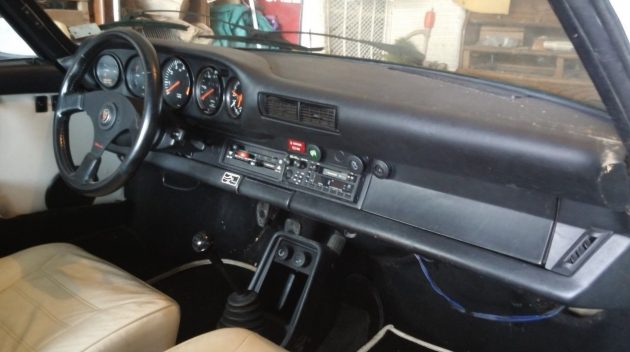
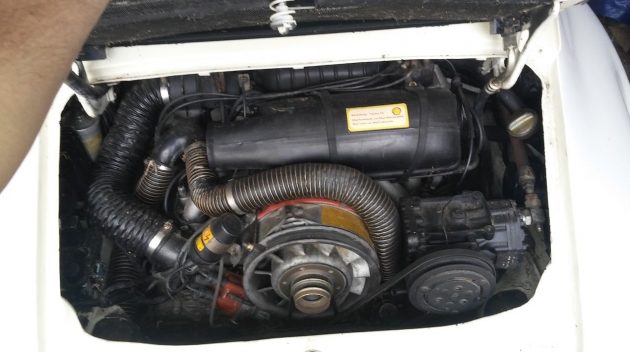
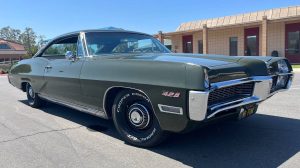
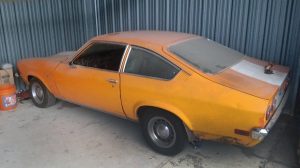
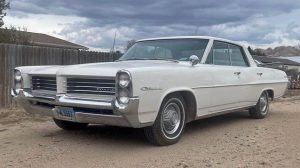
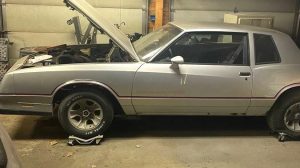


Looks like the mice have set up shop throughout. Expect wiring issues, urine-stained carpets and the usual rodent remnants. Needs a LOT of work for the price.
I’m the one that has this car listed for sale and I can tell you that the pieces of paper being referred to here are what was left after I removed an old Porsche racing bumper sticker that was stuck to the underside of the hood and NOT evidence of any such rodent activity as this person falsely suggests.
OK, no rodents, I stand corrected. Just a dirty car in a filthy garage where no effort was made to make the car remotely presentable for sale. Still needs a lot of work for the price.
Selling to free up the garage space? I have a thought. Keep the car and get rid of all the trash…. Just a thought.
Holy moly that’s a clean car. I know these late 70’s early 80’s 911s don’t get anyone falling all over themselves…unless they’re turbos…but this looks like it’s probably not a bad price for what it is
Uh…is mom single and looking to mingle?
Surprised this is still up with that BIN… a year ago this would have been gone within a day for $5-$7K more than this… looks like the 911 bubble, which has been teetering for 6 months, has finally burst.
I don’t know whether this 911 is a good deal or a bad deal because the seller doesn’t offer enough information. Getting the car out of the cramped garage and showing the extent of the rust that he mentioned would be a good start. Speaking of starts, trying to start it would be another good move.
And if Mom was having trouble shifting, it would be good to know what shape the clutch and transmission are in. The least you would need on that is a test drive.
Otherwise the bills for getting the car going could be large. The B-I-N price is almost $29K and the auction is almost over with no sale yet. SC coupes in very good to excellent condition have been selling for a median price of $44K at auctions lately, and are probably worth less now, as The Walrus suggested in his comment. I think he’s right
All of that makes this car less interesting than the seller seems to think it is. When I test drove a couple of SCs a few years ago for possible purchase I was not impressed by the lazy performance and the VW Beetle-like sound and feel of the car. I don’t expect this car to sell for what the seller is asking for it.
New shift linkage bushings would probably solve Mom’s shifting problems. After 40 years, the originals are likely toast. Not an uncommon issue on these.
COA would obviously help shed some light here. Don’t think spoilers were an option in 78
A lot of these were “tailed” in the 80’s. A VERY common aftermarket thing to add to your plain jane 911sc
“I do not sell cars for a living” no, just car parts… hmmm
Can you say broken head studs? I know you can!
That’s a $20k from the pics and that’s being generous
Awesome , what teen didn’t have this on his wall in the 80s , next to the lambo poster , and Heather Thomas.
Whale tail – check
White wheels – check
White interior – check check
I’ll bet it had a white leather wrapped steering wheel too!
How do all you comment folks know so much from looking at a couple of pictures of this cool, old Porsche? Broken head studs? Where did that come from? Come on, people, let the man sell his Mom’s car, for God’s sake!
“Cylinder Head Studs.
1977. Porsche was well aware of the problems associated with the 2.7 liter engine with its pulled cylinder head retaining studs following a repair that required cylinder head removal; sometimes the studs would pull without apparent reason. Porsche knew about thermal expansion, and had used, since the early ‘70s, in racing engines, a cylinder head stud made from an alloy called dilavar, while all street engines were assembled with steel head studs. Dilavar studs, first used in 930 Turbo Carrera engines, were found to have roughly the same thermal expansion properties as both aluminum and magnesium, which, in theory, would greatly reduce head stud stress at higher engine temperatures. It’s been written that steel studs, on the other hand, have an expansion rate roughly half that of the aluminum cylinders and cylinder heads that they hold together, which put extreme loads on the crankcase and the studs themselves. Dilavar studs, a non-magnetic steel alloy, found their way into 911S production part way into the ’77 year, but the studs were only used in the bottom twelve, exhaust side, positions (each 911 engine uses 24 studs, 4 per cylinder head). A thoroughly tested no-brainer, or an experiment, I don’t think that anyone knows the answer to that except for a select few people at Porsche. The first dilavar studs were a shiny, brushed finish, similar to many modern kitchen cabinet and drawer pulls, with a color closer to silver than to light gold. Their purpose was to stabilize cylinder head torque through the temperature range that the typical 911 engine ran at. I’m sure that the factory hoped that Dilavar studs would also be the cure for pulled head studs in magnesium engine cases. Because the thermal expansion rate between early steel studs, and the alloys that they secured, were quite different, the change was made.
1980. The first improvement to dilavar studs was made for 1980 SCs, which proved that Porsche was committed to their use. The stud changed in appearance, to an almost jewelry gold finish. For this design change to happen so early into the use of dilavar, Porsche must have seen, and not liked, corrosive activity on the first generation stud. Factory literature states that Porsche’s original philosophy of using twelve upper studs made of conventional steel, and twelve lower studs made of Dilavar remained consistent beyond the 1980 models. At some point Dilavar studs were again changed, and the newer version was coated with a gloss-black paint-like substance obviously designed to withstand corrosion. This change was thought to have been made during 1981 production, or at the outset of the 1982 build run.
OK, you’ve read the first part of this chapter and are probably wondering why. Well, if you own a ’77-81 SC the subject matter above could easily make you about $3K poorer. Head studs break. Some more often than others, but mostly the problem occurs with the uncoated, early studs, followed by the second generation, also uncoated, studs. The studs break about two inches from the end where the head nut screws on; they are obviously susceptible to corrosion at that point. A fastener such as a stud, or bolt, is under constant stress, from the time that it is tightened until the time that it’s loosened. The act of applying torque to a fastener is the actual stretching of, in this case, the stud. Enter corrosion, which attacks where it can, and begins to eat away at the metal. Remember, dilavar is a steel alloy, it is not immune to corrosion, actually far from it. At some point in its life, a corroded head stud will snap at its weakest point, and will no longer provide the fastened strength that a cylinder head requires at each of four corners.
Head studs break on low mileage cars; perhaps more often than on high mileage cars. “How can that be?” one might ask. No one knows the answer, but I know it to be true. I also know that it doesn’t happen to all cars, maybe even less than ten percent of each involved year. My shop replaced head studs on far more cars with less than 50K miles on the odometer, than with more than 100K miles. It can create a bit of a conundrum, the cars that can be considered garage queens, and are obviously the most desirable to find and buy, are the ones that have this potentially expensive time bomb lurking in the engine bay.
FAQs:
“How does one know when a head stud is broken?” All 911s built between 1978 and 1989 have the same maintenance requirement for what is normally referred to as a major service – typically required at about 15,000 miles. That service consists of a valve adjustment, oil and filter change, engine tune up and other items. In order to perform a valve adjustment, the valve covers, aka rocker covers or rocker arm covers, must be removed. There are four covers per engine, and are usually referred to as intake (upper) covers and exhaust (lower) covers. During removal of the lower covers I have been hit on the foot by a two inch long piece of a head stud, with the cylinder head retaining nut still on it. Sometimes the broken piece will fall out; sometimes it will hide in a recess in the camshaft housing casting. A normal major service inspection should include, especially on high-risk cars, a visual to verify that all of the studs/nuts are intact.
“What is the immediate symptom?” Usually there is no symptom, especially on conservatively used, commuter or weekend cars. I’m aware of cars that have been driven thousands of miles after a broken head stud was diagnosed, with no negative result.
“When does stud replacement become something more expensive?” If one or more broken studs are discovered during a major service and the needed repair is ignored, at some point a corner of a cylinder head, usually the corner with the broken stud, will work loose enough to leak combustion (the gases that are supposed to leave the combustion chamber via the exhaust valve). From the very moment exhaust gases begin to leak out between the cylinder and cylinder head the process of erosion begins. Eventually a cylinder, possibly even a cylinder head, will be damaged beyond repair.
“Is there a symptom when it’s almost too late to do the basic stud replacement without extra cost?” Yes, the driver will hear a distinct and rapid “pop, pop, pop…” during acceleration; louder with a cold engine than a warm engine.
“Is there any way to ascertain the presence of a broken stud without hearing the popping noise, or removing the valve covers?” With the car raised up enough to see the bottom of the engine, a flashlight examination can be done of the areas where the cylinders and cylinder heads join. Those areas should be dry and clean. If there is a black, crusty layer that appears to be burned oil, there is a chance that the engine has one or more broken head studs where the buildup is the heaviest. However, a broken head stud is not always responsible for this condition, sometimes it is from a tiny imperfection in a machined surface, and no immediate repair is required.
“If my engine has broken studs can the job be done so the repaired engine is a long-life unit?” Going by everything that is known today, the current generation of cylinder head studs, developed for the 993, should be trouble free for at least the service life of the engine that they’re in.
“If my engine was originally fitted with steel upper studs, and Dilavar lower studs, should all 24 studs be updated to Dilavar?” Porsche must have done temperature analysis regarding the required expansion of the upper and lower studs, but I’ve not seen a technical bulletin advising the correct way to handle this. My shop found evidence of corrosion on original, steel upper studs, so our policy was to install 24 new Dilavar studs on many engines that we repaired. Follow up inspections showed no adverse results regarding those repairs. That said, we also assembled many engines using steel upper studs, and twelve Dilavar studs in the lower positions.
“Are the black-coated generation of studs, used since 1981, the latest generation Dilavar?” No, Porsche developed a new Dilavar stud for 993 models (1995-1998), and 993 studs should be used for all repairs.
“Can anyone do this repair?” Usually you’re better off with a seasoned professional when 911 engine repairs are needed. There are an assortment of special tools needed to perform stud replacement, and it always helps for your technician to have a set of factory repair manuals on hand as well. There is no really good answer for this question, because there are probably better DIYers out there than the mechanic at the local dealer. My advice is to do your homework, ask every question that you can think of, get referrals, and then check out the shop you’re thinking of using. When you get there and you don’t see anything but a clapped-out 924 and a bunch of 3-series BMWs, rethink your choice.
I’ve been working on a new book (title & publication date still unknown!), and I realized that one of the chapters fit this thread and might possibly provide some insight to head studs. Please consider that this information does not come from Porsche, it comes largely from my personal experience in the trenches working daily on 911 automobiles. I have done everything possible, using personal notes, etc., to insure accuracy, but the history of some things that Porsche has done can be considered murky at best. This article is not written in stone, and I’m open to knowledgeable discussion regarding its content. What you’re going to read should be considered copyrighted material, so it may not be used or…blah, blah, blah. Enjoy! ”
Pete Zimmermann
__________________
Got it, Pete Zimmerman. Thanks. An expensive Porsche after all. The BF comment fans know all!